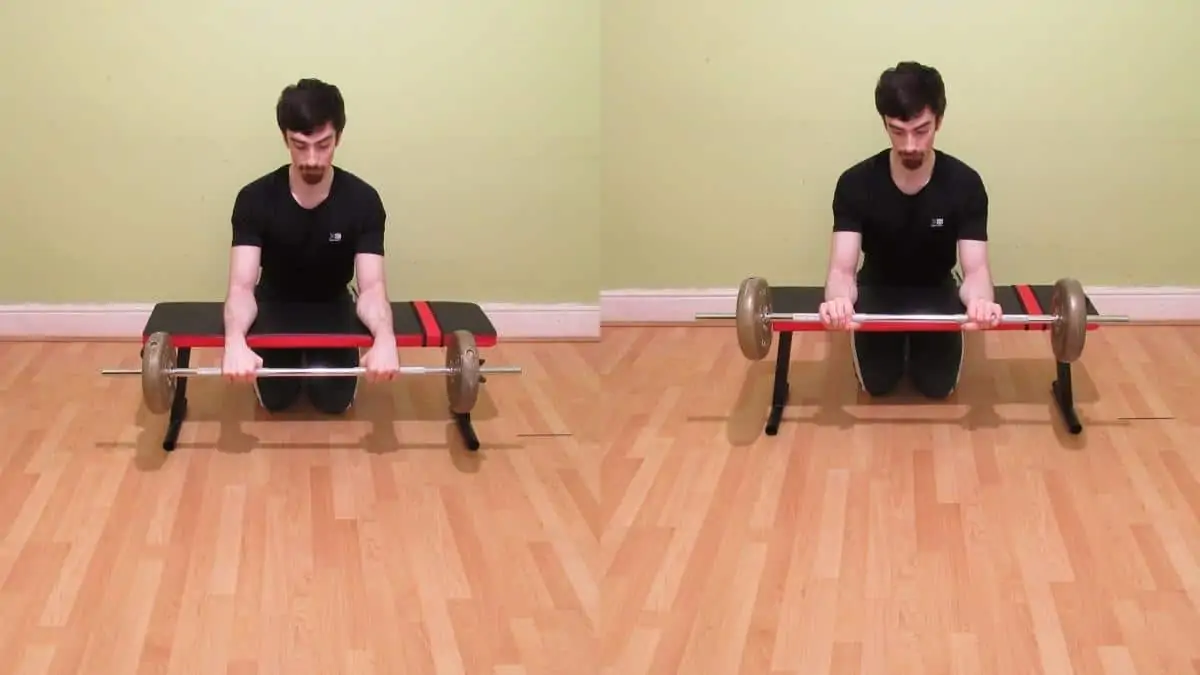Although performing the barbell reverse wrist curl might not attract gasps and applause from your fellow gym attendees, it will strengthen your wrists and your forearm extensor muscles while earning you a more proportional pair of arms.
Related posts
Barbell reverse wrist curl exercise details
- Main Muscles: Forearm extensors
- Secondary Muscles: Forearm flexors
- Exercise Type: Strength
- Exercise Mechanics: Isolation
- Difficulty Level: Beginner
- Equipment Needed: Weight bench, barbell
How to do a barbell reverse wrist curl over a bench
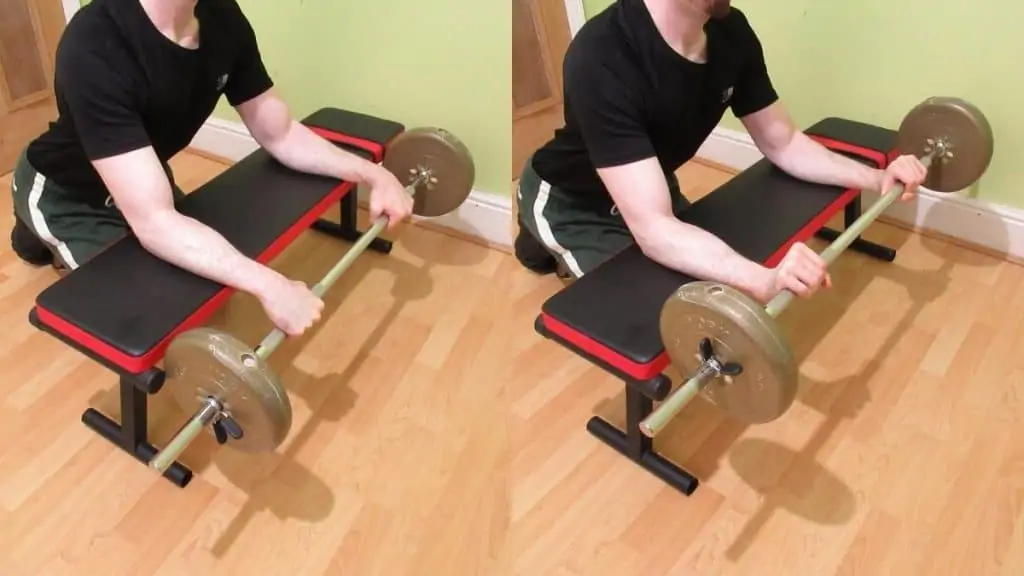
- Take a light, ideally fixed barbell and position it next to the longest side of a weight bench.
- Bend down and grab the bar with an overhand grip just inside shoulder width.
- Place your forearms firmly on the bench and let your hands hang off the edge.
- Engage your forearm extensors by bending your wrists downwards until you feel a nice stretch.
- Bring the bar back up by extending your wrists and squeezing the top of your forearms.
- Repeat for 2-3 sets of 15-20 reps.
Barbell reverse wrist curl mistakes
The reverse barbell wrist curl is such a pivotal exercise for developing aesthetic forearms. But making any of these 3 catastrophic mistakes could stop your progress dead in its tracks.
Overextending your wrists
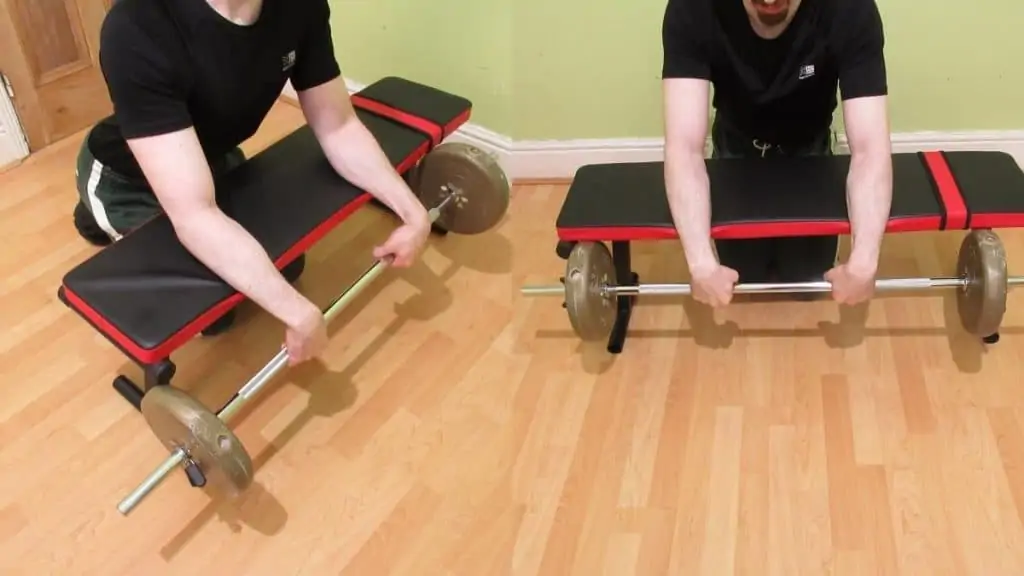
While It’s important to squeeze your forearm extensors hard at the top of each rep, there’s no need to overextend the joint in a bid to eke out more range of motion (ROM).
In fact, coming up too high or going down too low will actually take tension off your forearm muscles and shift the resistance onto your wrists.
It’s akin to throwing a punch with a bent wrist. You’ll leak power and hurt your joints. Don’t do it.
Lifting heavy

Don’t lift heavy on barbell reverse wrist curls.
Yes, you read that right. I actually want you to lift really light on this exercise.
I don’t care if you can bench press 500lbs; you need to use ridiculously light weights on this lift. You see, even when well developed, the forearm extensors just don’t have that great a force output potential compared to your other muscle groups.
Plus, they’re slow-twitch as heck, meaning that they respond best to high reps.
So if you want maximum gains (who doesn’t?), then it’s within your best interest to lighten the weight and chase the pump while performing the barbell reverse forearm curl for high reps.
Using a narrow grip
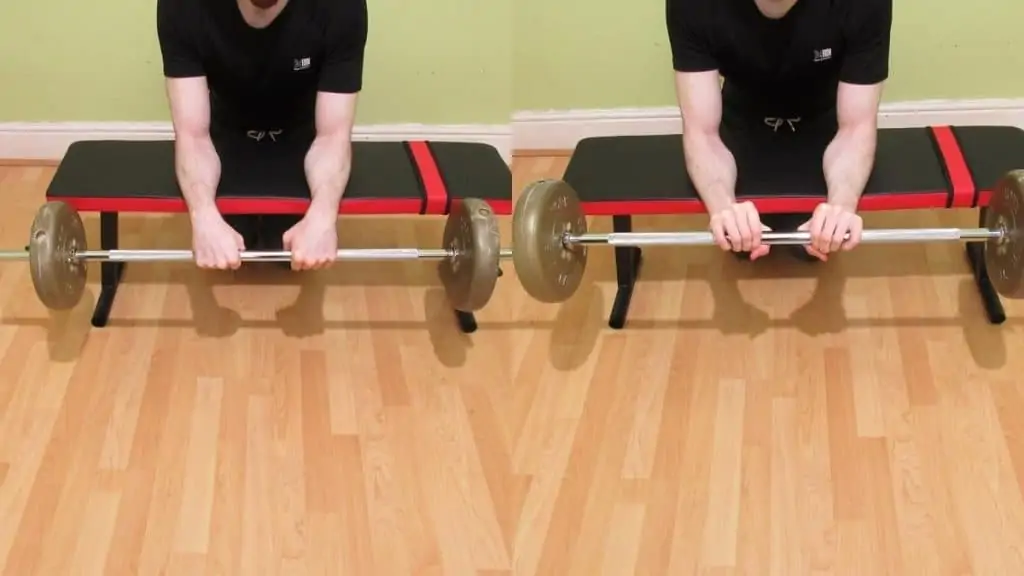
Some people say that using a narrow grip helps them to feel their forearms working. And I agree. But that doesn’t mean that you should put your hands together and curl. Instead, you want to put your hands just inside shoulder-width and use the long side of the bench.
Don’t use the narrow end because, even if you can fit your hands into that positioning, you’re still encouraging improper wrist spacing. And you know what that means?
Wrist pain and less ROM—a double whammy that you can easily avoid.
Pro tip: extreme grips and hand positions are often utilized to emphasize certain areas of a muscle. However, taking them to the extreme (i.e., putting your feet all the way together rather than just close to each other on squats) almost always backfires.
See also
Barbell reverse wrist curl benefits
Whether you’re a bodybuilder who’s chasing max muscle or a regular gym-goer looking to improve their wrist health, there are some very nice benefits to the reverse barbell wrist curl that you should know about.
Proportional forearms
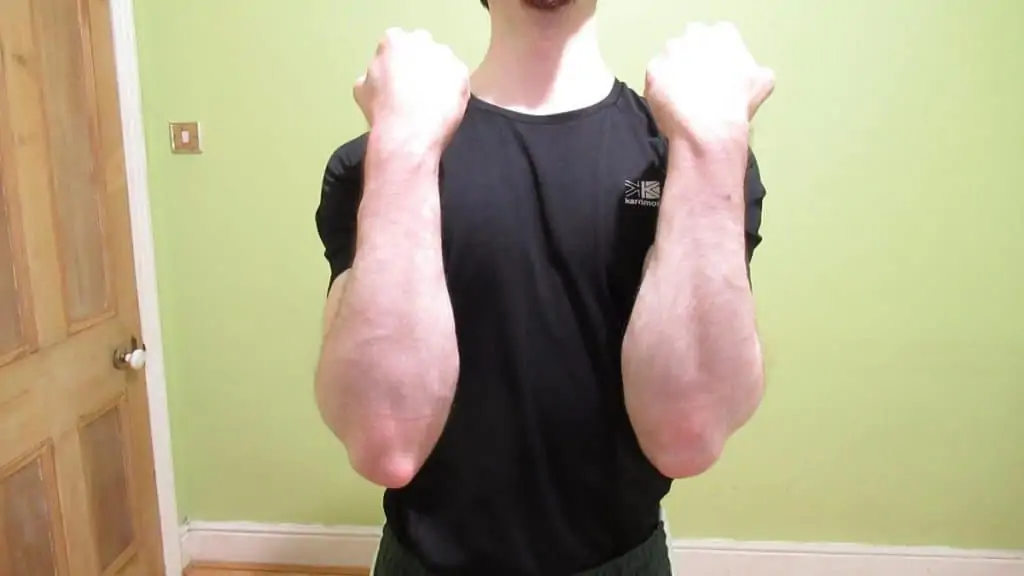
Unless you’re a competitive bodybuilder, you can actually get away with disproportionate forearms because the extensors have such limited growth potential compared to the flexors.
That said, if you can genuinely bring your extensors up to spec, then your forearms will be a sight to behold. You’ll achieve maximum points if you’re a physique competitor, and you’ll be the “forearm guy” in your gym for the rest of your training career.
Improved wrist health
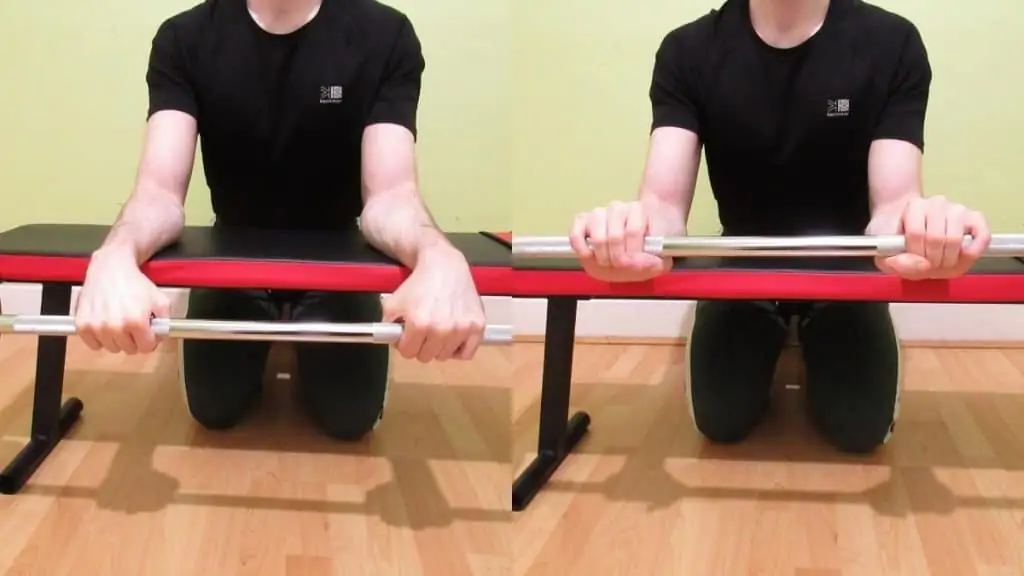
This one’s interesting. When done correctly, the barbell reverse forearm curl will strengthen the muscles, tendons, and ligaments that surround your wrist joint. In turn, this will increase your resistance to wrist stress, which commonly occurs from typing, manual labor, and other such activities, and so you’ll be more likely to avoid injury.
However, to get these benefits, you need to a) use proper form; and b) get sufficient recovery (tendons and ligaments take longer to recover than muscle tissue).
Enhanced forearm endurance
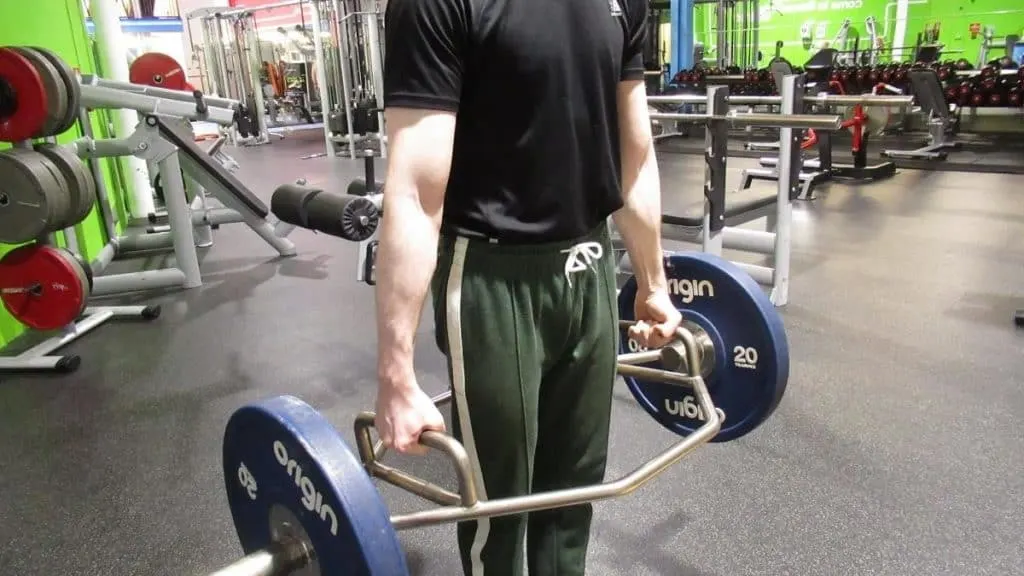
The forearms are fascinating. But they don’t need to be particularly strong for you to function in our modern society. Still, if you lift weights or play sports, then having strong lower arms is always helpful. [1]
Plus, if your forearms are ever called into action—you know, if you ever need to hang onto a cliff edge—then they better have solid endurance and not just raw power.
The fact that many manual labourers have better forearm development than bodybuilders and powerlifters tells you that the forearms respond particularly well to high reps.
Barbell reverse wrist curl alternatives
If you don’t have access to a barbell or want to piece together your own custom forearm routine, then choose a few of these exercises and create your own workout.
- Barbell wrist curl
- Behind the back wrist curl
- Cable wrist curl
- Palms down dumbbell wrist curls
- Single dumbbell wrist curl
- Standing reverse wrist curl
- Standing wrist curl
- Wrist roller
- Wrist twist
Reverse wrist curls (dumbbell)
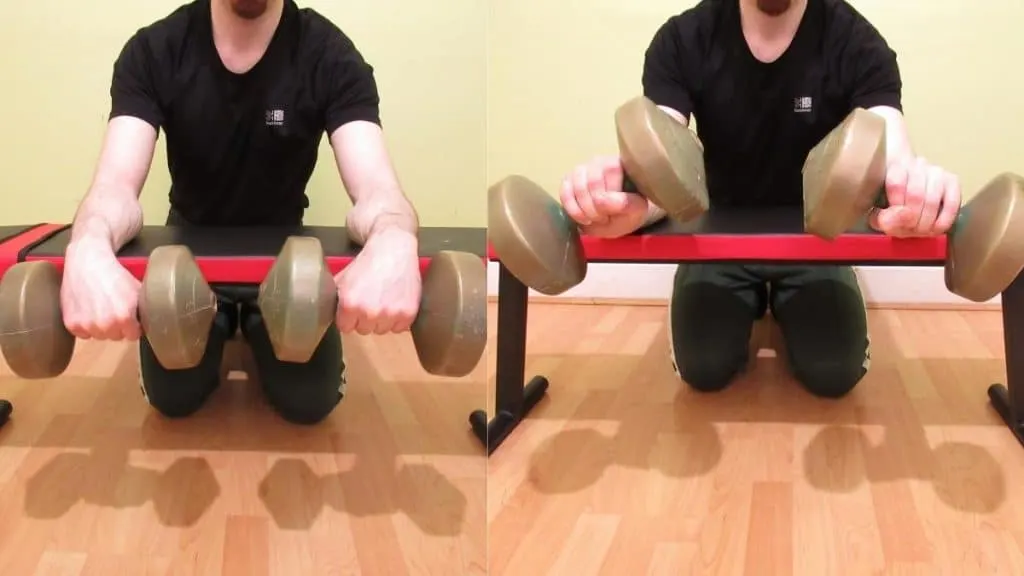
Doing reverse wrist curls with dumbbells is a great way to minimize the development of muscle imbalances—or prevent the worsening of any disparities that you already have.
The technique is exactly the same as the barbell version. But the great thing is that you can improve your mind-muscle connection by training one arm at a time, which really allows you to focus on those smaller muscle fibers.
Plate wrist curl
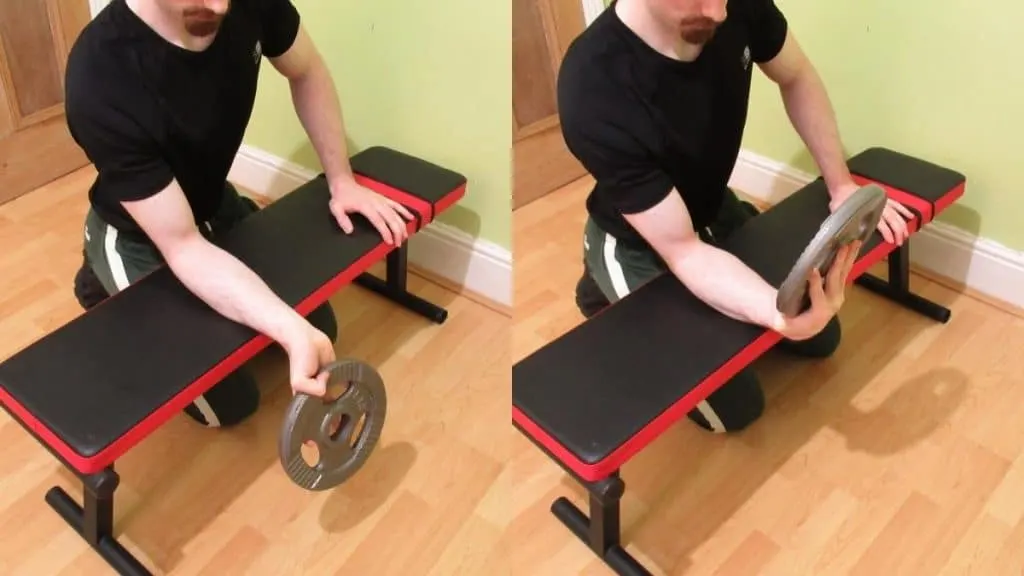
If you don’t have access to barbells or dumbbells, then give the plate wrist curl a try. You simply grip the edge of the plate (a great way to train those hand muscles) and perform a regular forearm curl. It’s one of those exercises that many people overlook but which is just as good as barbell versions.
EZ bar wrist curl
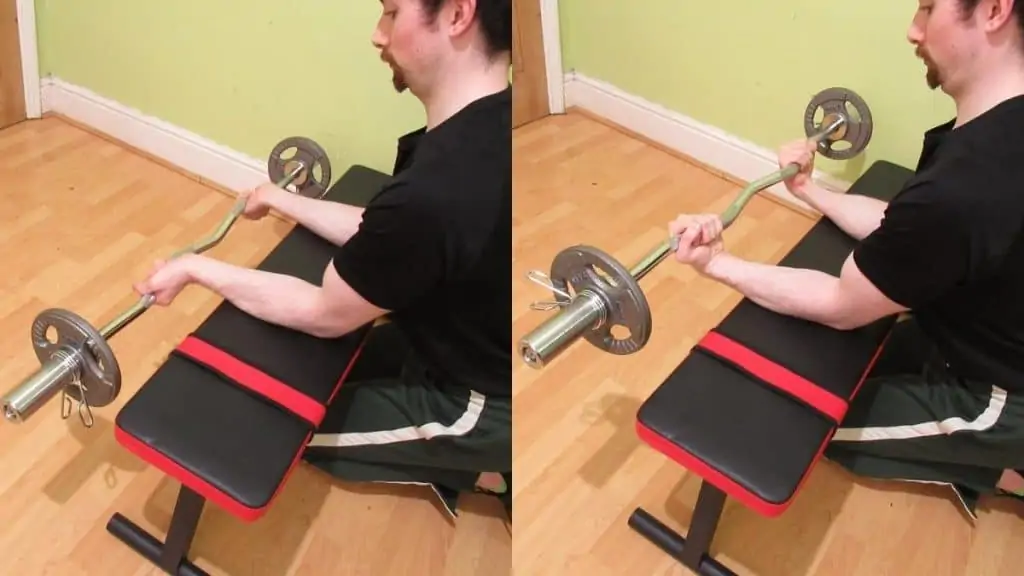
If the barbell reverse wrist curl hurts your wrists or you just want to vary things up, then I recommend giving the EZ bar wrist curl a go.
This “easy curl” bar is naturally more comfortable to grip thanks to the curved handles, which place your wrists in a more natural position. It’s a particularly useful piece of equipment for the reverse wrist curl because the exercise is pretty simple in terms of technique.
Conclusion: Is the reverse barbell wrist curl worth your time?

You might not feel like doing a reverse barbell wrist curl over a bench at the end of a hard arm or back workout, but trust me, the resulting forearm development will be worth every grueling set (yeah, wrist curls burn). [2]
Just make sure to avoid those mistakes that we spoke about so that you can keep your wrists healthy. You might feel tempted to increase the weight weekly or monthly—like on your compound lifts—but I think that’s a bad idea. This exercise is a rarity in that you can lift light weights and still enjoy plenteous gains. So enjoy it, and leave the big weights for leg day.
References
- Szymanski, D. J., Szymanski, J. M., Molloy, J. M., & Pascoe, D. D. (2004). Effect of 12 Weeks of Wrist and Forearm Training on High School Baseball Players. Journal of Strength and Conditioning Research, 18(3), 432–440. https://doi.org/10.1519/00124278-200408000-00007
- Mol, P., & Mol, P. (2019, May 30). I.C.E. Program #17 – Training The Forearms! Bodybuilding.Com. https://www.bodybuilding.com/fun/ice17.htm

